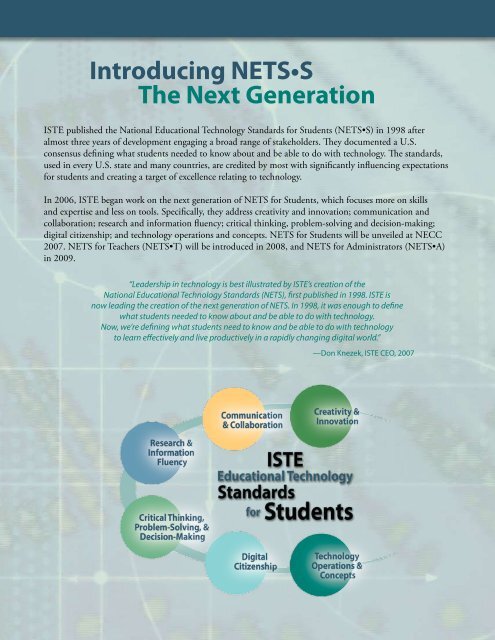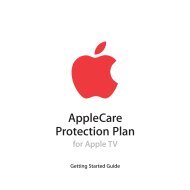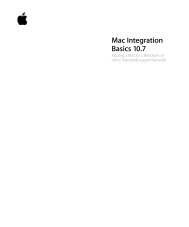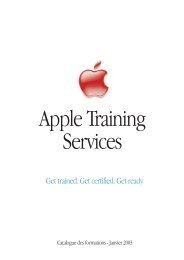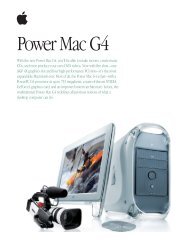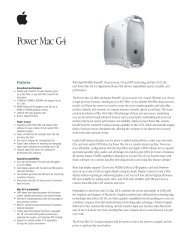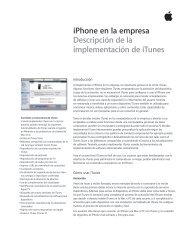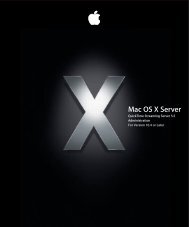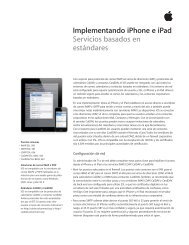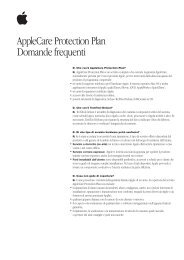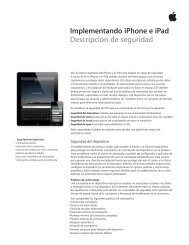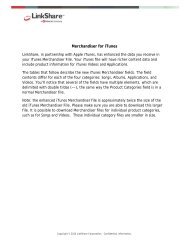Introducing NETSâ¢S The Next Generation - Apple
Introducing NETSâ¢S The Next Generation - Apple
Introducing NETSâ¢S The Next Generation - Apple
You also want an ePaper? Increase the reach of your titles
YUMPU automatically turns print PDFs into web optimized ePapers that Google loves.
<strong>Introducing</strong> NETS•S<br />
<strong>The</strong> <strong>Next</strong> <strong>Generation</strong><br />
ISTE published the National Educational Technology Standards for Students (NETS•S) in 1998 after<br />
almost three years of development engaging a broad range of stakeholders. <strong>The</strong>y documented a U.S.<br />
consensus defining what students needed to know about and be able to do with technology. <strong>The</strong> standards,<br />
used in every U.S. state and many countries, are credited by most with significantly influencing expectations<br />
for students and creating a target of excellence relating to technology.<br />
In 2006, ISTE began work on the next generation of NETS for Students, which focuses more on skills<br />
and expertise and less on tools. Specifically, they address creativity and innovation; communication and<br />
collaboration; research and information fluency; critical thinking, problem-solving and decision-making;<br />
digital citizenship; and technology operations and concepts. NETS for Students will be unveiled at NECC<br />
2007. NETS for Teachers (NETS•T) will be introduced in 2008, and NETS for Administrators (NETS•A)<br />
in 2009.<br />
“Leadership in technology is best illustrated by ISTE’s creation of the<br />
National Educational Technology Standards (NETS), first published in 1998. ISTE is<br />
now leading the creation of the next generation of NETS. In 1998, it was enough to define<br />
what students needed to know about and be able to do with technology.<br />
Now, we’re defining what students need to know and be able to do with technology<br />
to learn effectively and live productively in a rapidly changing digital world.”<br />
—Don Knezek, ISTE CEO, 2007
<strong>The</strong> <strong>Next</strong> <strong>Generation</strong> of ISTE’s<br />
National Educational Technology Standards<br />
for Students<br />
I. Creativity and Innovation<br />
Students demonstrate creative thinking, construct knowledge, and develop innovative products and processes<br />
using technology. Students:<br />
A. apply existing knowledge to generate new ideas, products, or processes.<br />
B. create original works as a means of personal or group expression.<br />
C. use models and simulations to explore complex systems and issues.<br />
D. identify trends and forecast possibilities.<br />
II. Communication and Collaboration<br />
Students use digital media and environments to communicate and work collaboratively, including at a distance,<br />
to support individual learning and contribute to the learning of others. Students:<br />
A. interact, collaborate, and publish with peers, experts, or others employing a variety of digital environments<br />
and media.<br />
B. communicate information and ideas effectively to multiple audiences using a variety of media and formats.<br />
C. develop cultural understanding and global awareness by engaging with learners of other cultures.<br />
D. contribute to project teams to produce original works or solve problems.<br />
III. Research and Information Fluency<br />
Students apply digital tools to gather, evaluate, and use information. Students:<br />
A. plan strategies to guide inquiry.<br />
B. locate, organize, analyze, evaluate, synthesize, and ethically use information from a variety of sources and<br />
media.<br />
C. evaluate and select information sources and digital tools based on the appropriateness to specific tasks.<br />
D. process data and report results.<br />
IV. Critical Thinking, Problem-Solving, and Decision-Making<br />
Students use critical thinking skills to plan and conduct research, manage projects, solve problems, and make<br />
informed decisions using appropriate digital tools and resources. Students:<br />
A. identify and define authentic problems and significant questions for investigation.<br />
B. plan and manage activities to develop a solution or complete a project.<br />
C. collect and analyze data to identify solutions and/or make informed decisions.<br />
D. use multiple processes and diverse perspectives to explore alternative solutions.<br />
V. Digital Citizenship<br />
Students understand human, cultural, and societal issues related to technology and practice legal and ethical<br />
behavior. Students:<br />
A. advocate and practice safe, legal, and responsible use of information and technology.<br />
B. exhibit a positive attitude toward using technology that supports collaboration, learning, and productivity.<br />
C. demonstrate personal responsibility for lifelong learning.<br />
D. exhibit leadership for digital citizenship.<br />
VI. Technology Operations and Concepts<br />
Students demonstrate a sound understanding of technology concepts, systems, and operations. Students:<br />
A. understand and use technology systems.<br />
B. select and use applications effectively and productively.<br />
C. troubleshoot systems and applications.<br />
D. transfer current knowledge to learning of new technologies.


